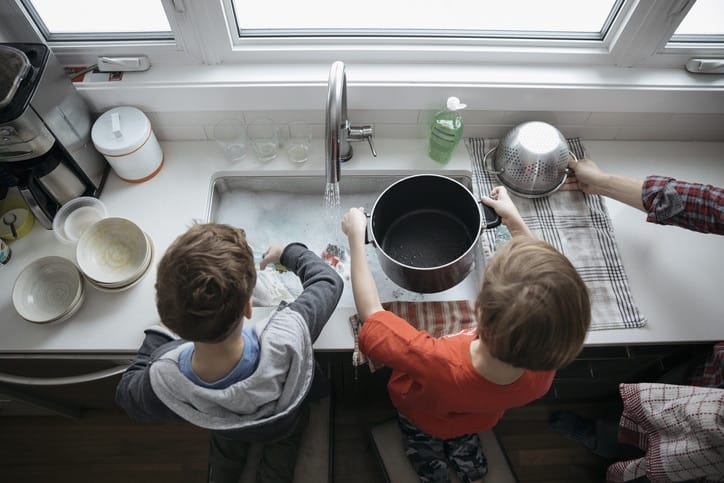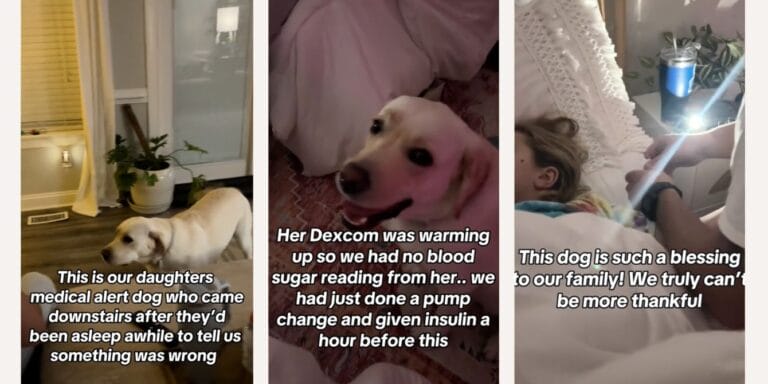A beginner’s guide to switching to non-toxic cleaning products

Simple swaps can make a big difference for your family.
Table of Contents
Over the years, switching to nontoxic products has become a popular trend. But, as moms ourselves, we understand how overwhelming it can be to consider a lifestyle change. We founded Branch Basics with the idea that simple swaps in your cleaning closet could be the jumpstart to living chemical-free.
For many people, the swap has been influenced by various headlines. One study compared cleaning your home with conventional products to smoking an entire pack of cigarettes every day. Additionally, the EPA has reported that indoor air quality is actually worse than outdoor air quality.
With every reason to make the swap, here is a beginner’s guide to non-toxic home cleaning. We call this process our Clean Sweep with just three simple steps.
1. Review
Pull out all of the cleaners (and pesticides) you currently have in your home. Yes, even the dusty ones deep in the back of the cabinet! Once you have these out, review them for red flag words, like “caution, warning or danger.”
Cleaning companies are not required by law to list their ingredients, so any cleaners that are not transparent about their ingredients should be taken out of your home. Remove anything with parfum or fragrance, as the word fragrance represents a fragrance recipe that may have never been tested for safety. (Pro tip: You can use essential oils to make scents you like.)
Other common ingredients to avoid are:
- Perchloroethylene or “PERC”
- Quarternary Ammonium Compounds, or “QUATS”
- 2-Butoxyethanol
- EPA registered pesticides like Chlorine
- Methylisothiazolinone “MIT”
- Benzisothiazolinone “BIT”
- Any of the Isothiazolinone family
- Ethoxylated Alcohols
Finally, toss your dryer sheets and fabric softeners if they’re loaded with carcinogens such as dichlorobenzene and benzyl acetate, respiratory irritants such as chloroform and benzyl alcohol, neurotoxins like linalool and ethanol, and endocrine disruptors such as phenoxyethanol and phthalates.
For any ingredient you are unsure of or don’t recognize, the internet has great resources like the Environmental Working Group’s (EWG) Guide to Healthy Cleaning, where you can look up health ratings from 1-10 (1 being the safest to 10 being the most toxic).
Another excellent tool is the Think Dirty® app, an easy way to evaluate ingredients in your beauty, personal care and household products. Just scan the product barcode and it will give you easy-to-understand info on the product and its ingredients. We recommend that household products have ingredients rated A on EWG’s Guide to Healthy Cleaning or a zero on Think Dirty.
2. Remove
If you find products that have toxic chemicals in them, remove them from your home. If you aren’t ready to part with some of your products, put them in an airtight Sterilite container in your garage or backyard. This simple act of removal will improve your air quality immediately.
3. Replace
Now it’s time to streamline. Do some research and find items that are plant-based or otherwise naturally-based. Branch Basics offers a variety of nontoxic alternatives to popular household products, like laundry detergent and bathroom cleaner. The Honest Company created safe baby and beauty products. And Beautycounter provides safer skin care and cosmetics. You can even scour the internet for resources for homemade alternatives, too. If it feels overwhelming, start with your most-used products and work your way down the list.
Switching to nontoxic cleaning supplies is one of the easiest ways to start creating a healthier home and there’s so much information out there that can walk you through what should and shouldn’t be in your products. Simple swaps can make a big difference for your family.


































